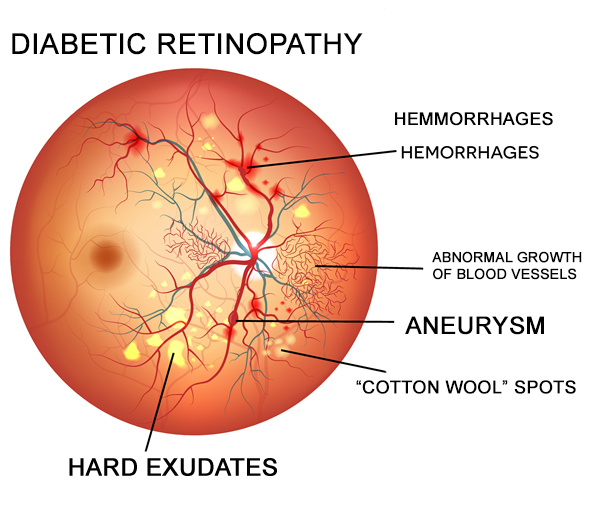

DIABETES CAN CAUSE OF BLINDNESS!
Diabetes is a chronic, progressive, sinister disease which occurs when the body is no longer able to regulate blood sugars. It has been growing at an exponential rate and is one of the fastest growing chronic diseases in the world. The number of people with diabetes has already risen from 108 million in 1980 to 422 million in 2014, and continues to do so yearly. It is now classed as an epidemic by the World Health Organization (WHO).
Asia is the epicenter of this epidemic due to Asia’s large population and rapid economic development. The Asian populations tend to more severely affected; tend to develop diabetes at younger ages and at lower Body Mass Index levels than Caucasians. The 3 main areas of the body affected by diabetes include the eyes, kidneys and peripheral nerves. Research by WHO has already proved that diabetes is a major cause of blindness, kidney failure, heart attacks, stroke and lower limb amputation.
Diabetic eye disease is also known as Diabetic retinopathy (DR). It is the leading cause of blindness in the working population in the world. Diabetic retinopathy has no early warning signs or symptoms. Patients often develop loss of vision as the first symptom, and upon medical review, discover that they are not only diabetic but have also developed diabetic retinopathy as well as other systemic complications. Without regular eye exams, DR often are diagnosed late, resulting in possible poor outcome and vision loss.
DR is the result of damage to the small blood vessels and neurons of the retina (the light sensing nerve layer in the back of the eye). The two main types of diabetic retinopathy are non-proliferative retinopathy (NPDR) and proliferative diabetic retinopathy (PDR). Some patients develop rapid loss of vision from swelling of the central part of vision, called diabetic macula edema (DME), and glaucoma.

Fortunately, DR can be treated with modern techniques and medications. When diagnosed early, it is possible to reverse NPDR and to halt the progression of PDR. If left untreated or undiagnosed, DR can result in permanent blindness.
The American Eye Center (AEC) has medical retina specialists experienced in the management of Diabetic eye disease and is well-equipped with the latest diagnostic equipment and treatments. Conveniently located in one specialized center, we diagnose and monitor with Retinal Photography, Fluorescein dye Angiography, and state-of-the-art Ocular Computed Tomography (OCT). Up-to-date treatments include Retinal Laser treatment, Anti-VEGF medications injection, and Steroid Implants, which can stabilize, reverse or stop the progression of DR.
The importance of early detection and early treatment of DR to protect your vision cannot be more strongly emphasized. All diabetic patients should have their eyes examined at least once a year to prevent possible vision loss.